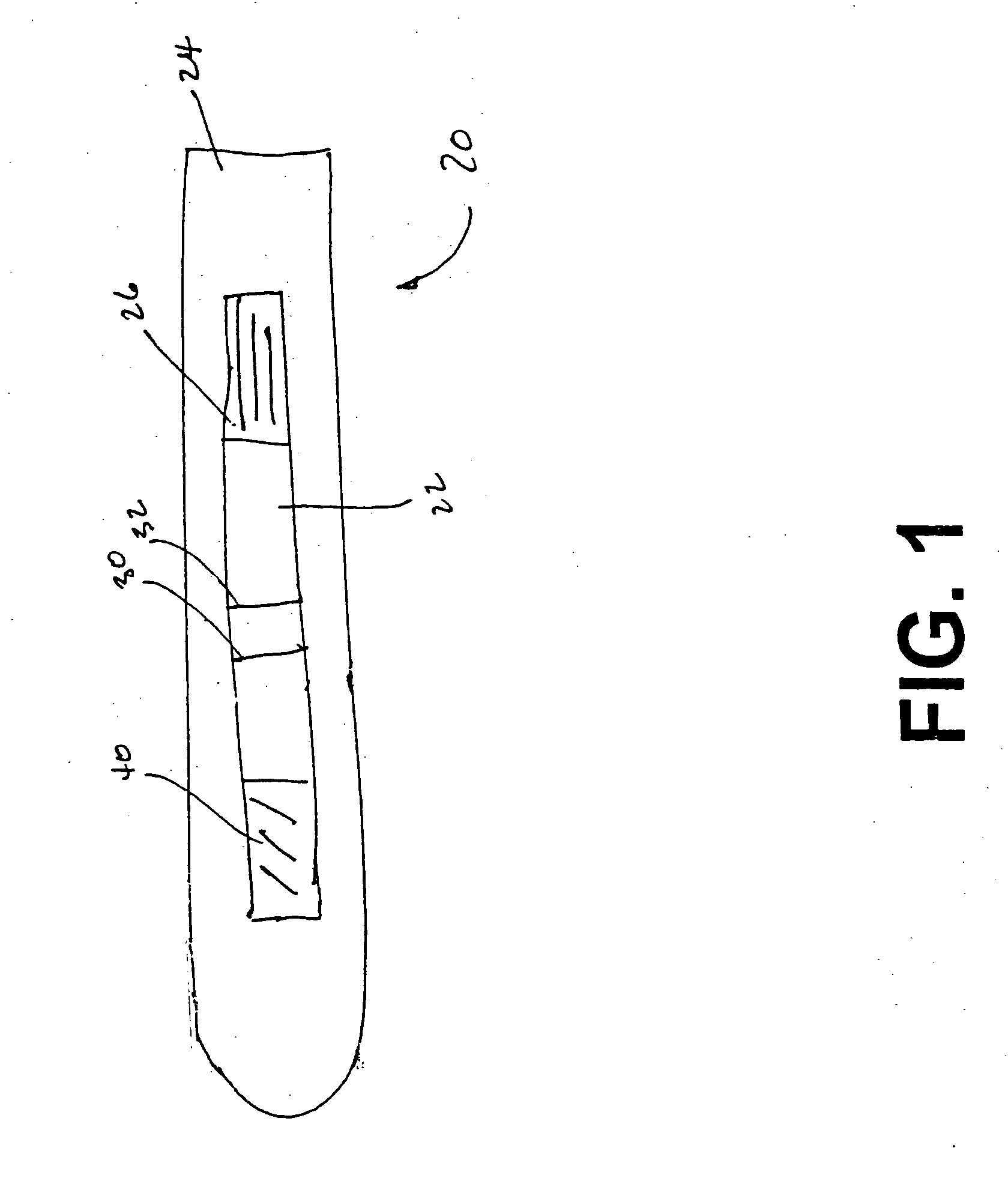Detecting yeast infections using a lateral flow assay
a lateral flow assay and yeast infection technology, applied in the field of detecting yeast infections using lateral flow assays, can solve the problems of affecting the usefulness affecting the detection so as to achieve the effect of detecting large pathogens, and reducing the accuracy of lateral flow assays
- Summary
- Abstract
- Description
- Claims
- Application Information
AI Technical Summary
Benefits of technology
Problems solved by technology
Method used
Image
Examples
examples
[0035] 40 nm diameter gold colloid was conjugated with monoclonal and polyclonal antibodies. The monoclonal antibodies were Mab1 (catalog number 10-C07, from Fitzgerald Industries International, Inc. of Concord, Mass. 01742-3049 USA) and the polyclonal antibodies were Pab2 (catalog number B65411R from Biodesign International of Saco, Maine USA 04072). On nitrocellulose membrane, (either HF075 and HF120 from Millipore Corporation of Billerica, Mass., USA) was striped with antibody Pab2 at 1 mg / ml as the capture reagent and goat anti-mouse at 1 mg / ml as control line. The membrane was dried at about 37 C for about 1 hour. After the membrane was taken out from the oven, the wicking pad (Millipore Corporation) was laminated to the upper portion near the control line. The card was cut into 4 mm wide half strips and immersed into 96 well-plate for testing. Each of the conjugate was tested against a buffer control and Candida albicans solution. When the testing well contains buffer solution...
PUM
 Login to View More
Login to View More Abstract
Description
Claims
Application Information
 Login to View More
Login to View More - R&D
- Intellectual Property
- Life Sciences
- Materials
- Tech Scout
- Unparalleled Data Quality
- Higher Quality Content
- 60% Fewer Hallucinations
Browse by: Latest US Patents, China's latest patents, Technical Efficacy Thesaurus, Application Domain, Technology Topic, Popular Technical Reports.
© 2025 PatSnap. All rights reserved.Legal|Privacy policy|Modern Slavery Act Transparency Statement|Sitemap|About US| Contact US: help@patsnap.com

